Barriers to BIM Implementation in the HVAC Industry: An Exploratory Study
Abstract
1. Introduction
2. Literature Review
3. Research Methodology
3.1. Determination of Barriers to BIM Implementation
3.2. Questionnaire Survey and Data Collection
3.3. Factor Structure and Data Analysis
4. Results
4.1. Analysis of Reliability and Validity
4.2. Identifying Factors
4.3. Confirmation of Factor and Model Analysis
4.4. Ranking of Factor Groups
5. Discussion
6. Conclusions
Author Contributions
Funding
Data Availability Statement
Conflicts of Interest
References
- Demirdöven, J.B.; Arditi, D. An Expert System for Building a Building Information Modeling (BIM) Environment (in Turkish: Bina Bilgi Modelleme (BIM) Ortamının Oluşturulması için bir Uzman Sistem. In Proceedings of the 3. Project and Construction Management Congress, Akdeniz University, Engineering Faculty, Antalya, Turkey, 6–8 November 2014. [Google Scholar]
- Eastman, C.M.; Eastman, C.; Teicholz, P.; Sacks, R.; Liston, K. BIM Handbook: A Guide to Building Information Modeling for Owners, Managers, Designers, Engineers and Contractors; John Wiley & Sons: Hoboken, NJ, USA, 2011; p. 626. [Google Scholar]
- Ullah, K.; Lill, I.; Witt, E. An Overview of BIM Adoption in the Construction Industry: Benefits and Barriers. In Proceedings of the 10th Nordic Conference on Construction Economics and Organization, Tallinn, Estonia, 7–8 May 2019; Emerald Publishing Limited: Bradford, UK, 2019; pp. 297–303. [Google Scholar]
- Kalfa, S.M. Building information modeling (BIM) systems and their applications in Turkey. J. Constr. Eng. Manag. Innov. 2018, 1, 55–66. [Google Scholar] [CrossRef]
- Budak, A.; Karataş, İ. Impact of the BIM system in construction management services in developing countries, Case of Turkey. Pamukkale Üniv. Mühendis. Bilim. Derg. 2022, 28, 828–839. [Google Scholar] [CrossRef]
- İlhan, B.; Yaman, H. BIM and Sustainable Construction Integration: An IFC-Based Model (in Turkish: BIM ve Sürdürülebilir Yapım Bütünleşme: IFC-Tabanlı Bir Model Öneri). Megaron 2015, 10, 440–448. [Google Scholar]
- Borkowski, A.S. Evolution of BIM: Epistemology, genesis and division into periods. J. Inf. Technol. Constr. 2023, 28, 646–661. [Google Scholar] [CrossRef]
- Datta, S.D.; Tayeh, B.A.; Hakeem, I.Y.; Abu Aisheh, Y.I. Benefits and barriers of implementing building information modeling techniques for sustainable practices in the construction industry—A comprehensive review. Sustainability 2023, 15, 12466. [Google Scholar] [CrossRef]
- Schery, C.A.D.; Vignon, Y.R.; Caiado, R.G.G.; Santos, R.S.; Congro, M.; Corseuil, E.T.; Roehl, D. BIM critical factors and benefits for public sector: From a systematic review to an empirical fuzzy multicriteria approach. Braz. J. Oper. Prod. Manag. 2023, 20, 1837. [Google Scholar] [CrossRef]
- Al-Dhaimesh, S.H.; Taib, N. A Review: Investigation of Augmented Reality–BIM Benefits in Design Process in Aec Industry. Informatica 2023, 47, 111–126. [Google Scholar] [CrossRef]
- Inzerillo, L.; Acuto, F.; Pisciotta, A.; Mantalovas, K.; Di Mino, G. Exploring 4d and 5d Analysis in BIM Environment for Infrastructures: A Case Study. Int. Arch. Photogramm. Remote Sens. Spat. Inf. Sci. 2024, 48, 233–240. [Google Scholar] [CrossRef]
- Hussain, O.A.; Moehler, R.C.; Walsh, S.D.; Ahiaga-Dagbui, D.D. Minimizing Cost Overrun in Rail Projects through 5D-BIM: A Conceptual Governance Framework. Buildings 2024, 14, 478. [Google Scholar] [CrossRef]
- Kusi, E.; Boateng, I.; Danso, H. Energy consumption and carbon emission of conventional and green buildings using building information modelling (BIM). Int. J. Build. Pathol. Adapt. 2024. ahead-of-print. [Google Scholar] [CrossRef]
- Nguyen, D.C.; Jeon, C.H.; Roh, G.; Shim, C.S. BIM-based preassembly analysis for design for manufacturing and assembly of prefabricated bridges. Autom. Constr. 2024, 160, 105338. [Google Scholar] [CrossRef]
- Toklu, S.; Mayuk, S.G. The implementation of building information modelling (BIM) in Turkey. In Proceedings of the ICONARCH International Congress of Architecture and Planning, Konya, Turkey, 13–15 October 2020; pp. 87–100. [Google Scholar]
- Mckoy, D.R.; Tesiero, R.C.; Acquaah, Y.T.; Gokaraju, B. Review of HVAC systems history and future applications. Energies 2023, 16, 6109. [Google Scholar] [CrossRef]
- González-Torres, M.; Pérez-Lombard, L.; Coronel, J.F.; Maestre, I.R.; Yan, D. A review on buildings energy information: Trends, end-uses, fuels and drivers. Energy Rep. 2022, 8, 626–637. [Google Scholar] [CrossRef]
- Krajčík, M.; Arıcı, M.; Ma, Z. Trends in research of heating, ventilation and air conditioning and hot water systems in building retrofits: Integration of review studies. J. Build. Eng. 2023, 76, 107426. [Google Scholar] [CrossRef]
- Tang, X.; Zhang, J.; Liang, R. The design of heating, ventilation, and air conditioning systems based on building information modeling: A review from the perspective of automatic and intelligent methods. J. Build. Eng. 2023, 82, 108200. [Google Scholar] [CrossRef]
- Zhao, X. A scientometric review of global BIM research: Analysis and visualization. Autom. Constr. 2017, 80, 37–47. [Google Scholar] [CrossRef]
- Kiamili, C.; Hollberg, A.; Habert, G. Detailed assessment of embodied carbon of HVAC systems for a new office building based on BIM. Sustainability 2020, 12, 3372. [Google Scholar] [CrossRef]
- Wang, H.; Xu, P.; Sha, H.; Gu, J.; Xiao, T.; Yang, Y.; Zhang, D. BIM-based automated design for HVAC system of office buildings—An experimental study. Build. Simul. 2022, 15, 1177–1192. [Google Scholar] [CrossRef]
- Gao, X.; Pishdad-Bozorgi, P. BIM-enabled facilities operation and maintenance: A review. Adv. Eng. Inform. 2019, 39, 227–247. [Google Scholar] [CrossRef]
- Mokhtar, A.H. BIM as a Pedagogical Tool for Teaching HVAC Systems to Architecture Students; American Society of Civil Engineers: Reston, VA, USA, 2019; pp. 123–133. [Google Scholar]
- Ngowtanasuwan, G.; Hadikusumo, B.H.W. System dynamics modelling for BIM adoption in Thai architectural and engineering design industry. Constr. Innov. 2017, 17, 457–474. [Google Scholar] [CrossRef]
- Bryde, D.; Broquetas, M.; Volm, J.M. The project benefits of building information modelling (BIM). Int. J. Proj. Manag. 2013, 31, 971–980. [Google Scholar] [CrossRef]
- Waqar, A.; Qureshi, A.H.; Alaloul, W.S. Barriers to Building Information Modeling (BIM) deployment in small construction projects: Malaysian construction industry. Sustainability 2023, 15, 2477. [Google Scholar] [CrossRef]
- Xu, H.; Chang, R.; Dong, N.; Zuo, J.; Webber, R.J. Interaction mechanism of BIM application barriers in prefabricated construction and driving strategies from stakeholders’ perspectives. Ain Shams Eng. J. 2023, 14, 101821. [Google Scholar] [CrossRef]
- El-Habashy, S.; Alqahtani, F.K.; Mekawy, M.; Sherif, M.; Badawy, M. Identification of 4D-BIM Barriers in Offshore Construction Projects Using Fuzzy Structural Equation Modeling. Buildings 2023, 13, 1512. [Google Scholar] [CrossRef]
- Waqar, A.; Othman, I.; Shafiq, N.; Deifalla, A.; Ragab, A.E.; Khan, M. Impediments in BIM implementation for the risk management of tall buildings. Results Eng. 2023, 20, 101401. [Google Scholar] [CrossRef]
- Kineber, A.F.; Othman, I.; Famakin, I.O.; Oke, A.E.; Hamed, M.M.; Olayemi, T.M. Challenges to the Implementation of Building Information Modeling (BIM) for Sustainable Construction Projects. Appl. Sci. 2023, 13, 3426. [Google Scholar] [CrossRef]
- Okwe, E.I.; Olanrewaju, O.I.; Heckman, M.; Chileshe, N. Barriers to building information modelling and facility management practices integration in Nigeria. J. Facil. Manag. 2023, 21, 845–865. [Google Scholar] [CrossRef]
- Chan, D.W.M.; Olawumi, T.O.; Ho, A.M.L. Perceived benefits of and barriers to Building Information Modelling (BIM) implementation in construction: The case of Hong Kong. J. Build. Eng. 2019, 25, 100764. [Google Scholar] [CrossRef]
- Matarneh, R.; Hamed, S. Barriers to the adoption of building information modeling in the Jordanian building industry. Open J. Civ. Eng. 2017, 7, 325–335. [Google Scholar] [CrossRef]
- Saleh, M.A.D. Barriers and Driving Factors for Implementing Building Information Modelling (BIM) in Libya. Master’s Thesis, Eastern Mediterranean University (EMU)-Doğu Akdeniz Üniversitesi (DAÜ), Famagusta, Cyprus, 2015. [Google Scholar]
- Alhumayn, S.; Chinyio, E.; Ndekugri, I. The barriers and strategies of implementing BIM in Saudi Arabia. WIT Trans. Built Environ. 2017, 169, 55–67. [Google Scholar]
- Park, K.; Kim, K. BIM application and adoption in the UK housing sector. Integr. Build. Inf. Model. 2017, 46–81. [Google Scholar]
- Chan, C.T. Barriers of implementing BIM in construction industry from the designers’ perspective: A Hong Kong experience. J. Syst. Manag. Sci. 2014, 4, 24–40. [Google Scholar]
- Latiffi, A.A.; Mohd, S.; Rakiman, U.S. Potential Improvement of Building Information Modeling (BIM) Implementation in Malaysian Construction Projects. In Proceedings of the Product Lifecycle Management in the Era of Internet of Things: 12th IFIP WG 5.1 International Conference, PLM 2015, Doha, Qatar, 19–21 October 2015; Revised Selected Papers 12; Springer International Publishing: Berlin/Heidelberg, Germany, 2016; pp. 149–158. [Google Scholar]
- Gerges, M.; Austin, S.; Mayouf, M.; Ahiakwo, O.; Jaeger, M.; Saad, A.; El Gohary, T. An investigation into the implementation of Building Information Modeling in the Middle East. J. Inf. Technol. Constr. 2017, 22, 1–15. [Google Scholar]
- Chien, K.F.; Wu, Z.H.; Huang, S.C. Identifying and assessing critical risk factors for BIM projects: Empirical study. Autom. Constr. 2014, 45, 1–15. [Google Scholar] [CrossRef]
- Eadie, R.; Odeyinka, H.; Browne, M.; Mahon, C.; Yohanis, M. Building information modelling adoption: An analysis of the barriers of implementation. J. Eng. Archit. 2014, 2, 77–101. [Google Scholar]
- Harrison, C.; Thurnell, D. 5D BIM in a consulting quantity surveying environment. In Proceedings of the Building a Better New Zealand Conference, Auckland, New Zealand, 3–5 September 2014. [Google Scholar]
- Olatunji, O. A preliminary review on the legal implications of BIM and model ownership. J. Inf. Technol. Constr. 2011, 16, 687–696. [Google Scholar]
- Omar, H.S. Solutions for the UAE Architecture, Engineering, and Construction (AEC) Industry to Mandate Building Information Modeling (BIM). Ph.D. Thesis, The British University in Dubai (BUiD), Duıbai, United Arab Emirates, 2015. [Google Scholar]
- Ganah, A.; John, G.A. An overview of the feasibility of achieving level 2 building information modeling by 2016 in the UK. J. Civ. Eng. Archit. 2015, 9, 885–894. [Google Scholar]
- Sun, C.; Jiang, S.; Skibniewski, M.J.; Man, Q.; Shen, L. A literature review of the factors limiting the application of BIM in the construction industry. Technol. Econ. Dev. Econ. 2017, 23, 764–779. [Google Scholar] [CrossRef]
- Yan, H.; Demian, P. Benefits and barriers of building information modelling. In Proceedings of the 12th International Conference on Computing in Civil and Building Engineering, Beijing, China, 16–18 October 2008. [Google Scholar]
- Memon, A.H.; Rahman, I.A.; Memon, I.; Azman, N.I.A. BIM in Malaysian construction industry: Status, advantages, barriers and strategies to enhance the implementation level. Res. J. Appl. Sci. Eng. Technol. 2014, 8, 606–614. [Google Scholar] [CrossRef]
- Goedert, J.D.; Meadati, P. Integrating construction process documentation into building information modeling. J. Constr. Eng. Manag. 2008, 134, 509–516. [Google Scholar] [CrossRef]
- Porwal, A.; Hewage, K.N. Building Information Modeling (BIM) partnering framework for public construction projects. Autom. Constr. 2013, 31, 204–214. [Google Scholar] [CrossRef]
- Elhendawi, A.; Smith, A.; Elbeltagi, E. Methodology for BIM implementation in the Kingdom of Saudi Arabia. Int. J. BIM Eng. Sci. 2019, 2, 1–21. [Google Scholar] [CrossRef]
- Bui, N.; Merschbrock, C.; Munkvold, B.E. A review of building information modelling for construction in developing countries. Procedia Eng. 2016, 164, 487–494. [Google Scholar] [CrossRef]
- Sebastian, R. Breaking through business and legal barriers of open collaborative processes based on building information modelling (BIM). In Proceedings of the 18th CIB World Building Congress, Salford, UK, 10–13 May 2010. [Google Scholar]
- Liu, R.; Issa, R.; Olbina, S. Factors influencing the adoption of building information modeling in the AEC Industry. In Proceedings of the International Conference on Computing in Civil and Building Engineering, Nottingham, UK, 30 June–2 July 2010. [Google Scholar]
- Volk, R.; Stengel, J.; Schultmann, F. Building Information Modeling (BIM) for existing buildings—Literature review and future needs. Autom. Constr. 2014, 38, 109–127. [Google Scholar] [CrossRef]
- McAuley, B.; Hore, A.; West, R. Building information modelling in Ireland 2017. In Proceedings of the Lean and Computing in Construction Congress (LC3), Dublin, Ireland, 1 May 2017; pp. 759–766. [Google Scholar]
- Banawi, A. Barriers to implement building information modeling (BIM) in public projects in Saudi Arabia. In Advances in Human Factors, Sustainable Urban Planning and Infrastructure: Proceedings of the AHFE 2017 International Conference on Human Factors, Sustainable Urban Planning and Infrastructure, The Westin Bonaventure Hotel, Los Angeles, CA, USA, 17−21 July 2017; Springer International Publishing: Berlin/Heidelberg, Germany, 2018; pp. 119–125. [Google Scholar]
- Gerges, M.; Ahiakwo, O.; Jaeger, M.; Asaad, A. Building information modeling and its application in the state of Kuwait. Int. J. Civil Env. Struc. Cons. Arch. Eng. 2016, 10, 81–86. [Google Scholar]
- Turkish Statistical Institute. Available online: www.tuik.gov.tr (accessed on 23 February 2024).
- The Union of Chambers and Commodity Exchanges of Turkey. Available online: www.tobb.org.tr (accessed on 23 February 2024).
- Krejcie, R.V.; Morgan, D.W. Determining sample size for research activities. Educ. Psychol. Meas. 1970, 30, 607–610. [Google Scholar] [CrossRef]
- Suhartini, R.E.; Nurlaela, L.; Wahyuningsih, U.Y.; Prihatina, Y.I. Validity, Reliability, Intra-rater Instrument Parameter Teaching Factory and Learning Outcomes of Industrial Clothing. In Proceedings of the International Joint Conference on Arts and Humanities, IJCAH 2021, Surabaya, Indonesia, 2 October 2021; Volume 618, pp. 1230–1239. [Google Scholar]
- Kazman, J.B.; Galecki, J.M.; Lisman, P.; Deuster, P.A.; O’Connor, F.G. Factor structure of the functional movement screen in marine officer candidates. J. Strength Cond. Res. 2014, 28, 672–678. [Google Scholar] [CrossRef]
- Aryal, N. Behavioral Biases and Nepali Investors: A Study on the Effect of Biases on the Investment Performance. 2021. Available online: https://ssrn.com/abstract=3977747 (accessed on 30 January 2024).
- Zin, R.; Nurja, N.A.; Jais, M.A. Attainment of the program’s educational objectives (PEO) among community college students in the field of civil engineering & built environment as semi-skilled workers. Int. J. Borneo Eng. Adv. Multidiscip. 2023, 2. [Google Scholar]
- Ursachi, G.; Horodnic, I.A.; Zait, A. How reliable are measurement scales? External factors with indirect influence on reliability estimators. Procedia Econ. Financ. 2015, 20, 679–686. [Google Scholar] [CrossRef]
- George, D.; Mallery, P. IBM SPSS Statistics 26 Step by Step: A Simple Guide and Reference; Routledge: New York, NY, USA, 2019. [Google Scholar]
- Krishnan, W.B.; Onsman, A.; Brown, T. Exploratory factor analysis: A five-step guide for novices. Australas. J. Paramed. 2010, 8, 1–13. [Google Scholar] [CrossRef]
- Samian, M.; Mahdei, K.N.; Saadi, H.; Movahedi, R. Identifying factors affecting optimal management of agricultural water. J. Saudi Soc. Agric. Sci. 2015, 14, 11–18. [Google Scholar] [CrossRef]
- Ghosh, S.; Jintanapakanont, J. Identifying and assessing the critical risk factors in an underground rail project in Thailand: A factor analysis approach. Int. J. Proj. Manag. 2004, 22, 633–643. [Google Scholar] [CrossRef]
- Fernández-Portero, C.; Alarcón, D.; Padura, Á.B. Dwelling conditions and life satisfaction of older people through residential satisfaction. J. Environ. Psychol. 2017, 49, 1–7. [Google Scholar] [CrossRef]
- Liu, T.; Su, X.; Li, N.; Sun, J.; Ma, G.; Zhu, W. Development and validation of a food and nutrition literacy questionnaire for Chinese school-age children. PLoS ONE 2021, 16, e0244197. [Google Scholar] [CrossRef]
- Šprajc, P.; Bjegović, M.; Vasić, B. Energy security in decision making and governance-Methodological analysis of energy trilemma index. Renew. Sustain. Energy Rev. 2019, 114, 109341. [Google Scholar] [CrossRef]
- Zeynivandnezhad, F.; Rashed, F.; Kanooni, A. Exploratory factor analysis for TPACK among mathematics teachers: Why, what and how. Anatol. J. Educ. 2019, 4, 59–76. [Google Scholar] [CrossRef]
- Tabachnick, B.G.; Fidell, L.S. Using Multivariate Statistics; Pearson Education: Boston, MA, USA, 2007. [Google Scholar]
- Yong, A.G.; Pearce, S. A beginner’s guide to factor analysis: Focusing on exploratory factor analysis. Tutor. Quant. Methods Psychol. 2013, 9, 79–94. [Google Scholar] [CrossRef]
- Jolliffe, I.T.; Cadima, J. Principal component analysis: A review and recent developments. Philos. Trans. R. Soc. A Math. Phys. Eng. Sci. 2016, 374, 20150202. [Google Scholar] [CrossRef]
- Li, L. Dimension reduction for high-dimensional data. In Statistical Methods in Molecular Biology; Springer: Totowa, NJ, USA, 2010; pp. 417–434. [Google Scholar]
- Zabalza, J.; Ren, J.; Yang, M.; Zhang, Y.; Wang, J.; Marshall, S.; Han, J. Novel folded-PCA for improved feature extraction and data reduction with hyperspectral imaging and SAR in remote sensing. ISPRS J. Photogramm. Remote Sens. 2014, 93, 112–122. [Google Scholar] [CrossRef]
- Agarwal, A.; El-Ghazawi, T.; El-Askary, H.; Le-Moigne, J. Efficient hierarchical-PCA dimension reduction for hyperspectral imagery. In Proceedings of the 2007 IEEE International Symposium on Signal Processing and Information Technology, Giza, Egypt, 15–18 December 2007; pp. 353–356. [Google Scholar]
- Howard, M.C. A review of exploratory factor analysis decisions and overview of current practices: What we are doing and how can we improve? Int. J. Hum.-Comput. Interact. 2016, 32, 51–62. [Google Scholar] [CrossRef]
- Rojas-Valverde, D.; Pino-Ortega, J.; Gómez-Carmona, C.D.; Rico-González, M. A systematic review of methods and criteria standard proposal for the use of principal component analysis in team’s sports science. Int. J. Environ. Res. Public Health 2020, 17, 8712. [Google Scholar] [CrossRef] [PubMed]
- Farooq, R. Role of structural equation modeling in scale development. J. Adv. Manag. Res. 2016, 13, 75–91. [Google Scholar] [CrossRef]
- Goretzko, D.; Siemund, K.; Sterner, P. Evaluating model fit of measurement models in confirmatory factor analysis. Educ. Psychol. Meas. 2024, 84, 123–144. [Google Scholar] [CrossRef]
- Roiz Junior, P.R.S.; da Silveira, D.X.; Barbosa, P.C.R.; Torres, M.A.D.S.; Moreira Junior, E.D.C.; Areco, K.C.N.; de Oliveira, R.T.A.; Tazitu, A.G.; Fernandes, J.A.B.; Kasinski, S.K.; et al. Psychometric properties of the Brazilian version of the Big Five Inventory. Trends Psychiatry Psychother. 2023, 45, e20210458. [Google Scholar] [CrossRef] [PubMed]
- Musarat, M.A.; Alaloul, W.S.; Khan, A.M.; Ayub, S.; Jousseaume, N. A survey-based approach of framework development for improving the application of internet of things in the con struction industry of Malaysia. Results Eng. 2014, 21, 101823. [Google Scholar] [CrossRef]
- Gawande, N.S.; Sabihuddin, S.; Mahatme, P.S. Amenities and quality adequacy of residential apartment building in Amravati city-an overview. Int. Res. J. Eng. Technol. 2020, 7, 2909–2915. [Google Scholar]
- Zhao, Z.Y.; Chen, Y.L. Critical factors affecting the development of renewable energy power generation: Evidence from China. J. Clean. Prod. 2018, 184, 466–480. [Google Scholar] [CrossRef]
- Lin, Y.C.; Su, Y.C. Developing mobile-and BIM-based integrated visual facility maintenance management system. Sci. World J. 2013, 2013, 124249. [Google Scholar] [CrossRef]
- Ahmed, S. Barriers to implementation of building information modeling (BIM) to the construction industry: A review. J. Civ. Eng. Constr. 2018, 7, 107–113. [Google Scholar] [CrossRef]
- Durdyev, S.; Mbachu, J.; Thurnell, D.; Zhao, L.; Hosseini, M.R. BIM adoption in the Cambodian construction industry: Key drivers and barriers. ISPRS Int. J. Geo-Inf. 2021, 10, 215. [Google Scholar] [CrossRef]
- Olawumi, T.O.; Chan, D.W.; Wong, J.K.; Chan, A.P. Barriers to the integration of BIM and sustainability practices in construction projects: A Delphi survey of international experts. J. Build. Eng. 2018, 20, 60–71. [Google Scholar] [CrossRef]
- Likita, A.J.; Jelodar, M.B.; Vishnupriya, V.; Rotimi, J.O.B.; Vilasini, N. Lean and BIM Implementation Barriers in New Zealand Construction Practice. Buildings 2022, 12, 1645. [Google Scholar] [CrossRef]
- Tekin, H.; Atabay, Ş. Building information modelling roadmap strategy for Turkish construction sector. In Proceedings of the Institution of Civil Engineers-Municipal Engineer; Thomas Telford Ltd.: London, UK, 2019; Volume 172, pp. 145–156. [Google Scholar]
- Li, H.; Wang, G. Impacts of isomorphic pressures on BIM adoption in construction projects. J. Constr. Eng. Manag. 2014, 140, 04014056. [Google Scholar]
- Tekin, H.; Atabay, Ş. İnşaat Sektöründe Yapı Bilgi Modellemesi ve Kurumsal Kaynak Planlama Entegrasyonunu Engelleyen Faktörlerin İncelenmesi. Euroasia J. Math. Eng. Nat. Med. Sci. 2022, 9, 87–97. [Google Scholar]
- Hauashdh, A.; Jailani, J.; Abdul Rahman, I.; Al-Fadhali, N. Factors affecting the number of building defects and the ap-proaches to reduce their negative impacts in Malaysian public universities’ buildings. J. Facil. Manag. 2022, 20, 145–171. [Google Scholar] [CrossRef]
- Alhamami, A.; Petri, I.; Rezgui, Y.; Kubicki, S. Promoting energy efficiency in the built environment through adapted BIM training and education. Energies 2020, 13, 2308. [Google Scholar] [CrossRef]
- Deng, Y.; Li, J.; Wu, Q.; Pei, S.; Xu, N.; Ni, G. Using network theory to explore BIM application barriers for BIM sustainable development in China. Sustainability 2020, 12, 3190. [Google Scholar] [CrossRef]
- Sporr, A.; Zucker, G.; Hofmann, R. Automatically creating HVAC control strategies based on Building Information Modeling (BIM): Heat provisioning and distribution. Energies 2020, 13, 4403. [Google Scholar] [CrossRef]
- Aladağ, H. Türk İnşaat Sektöründe Dijital Dönüşüm Uygulamalari Üzerine Bir Araştirma. Mühendis. Bilim. ve Tasarım Derg. 2022, 10, 973–986. [Google Scholar] [CrossRef]
- Converso, S.; Civiero, P.; Ciprigno, S.; Veselinova, I.; Riffat, S. Toward a Fast but Reliable Energy Performance Evaluation Method for Existing Residential Building Stock. Energies 2023, 16, 3930. [Google Scholar] [CrossRef]
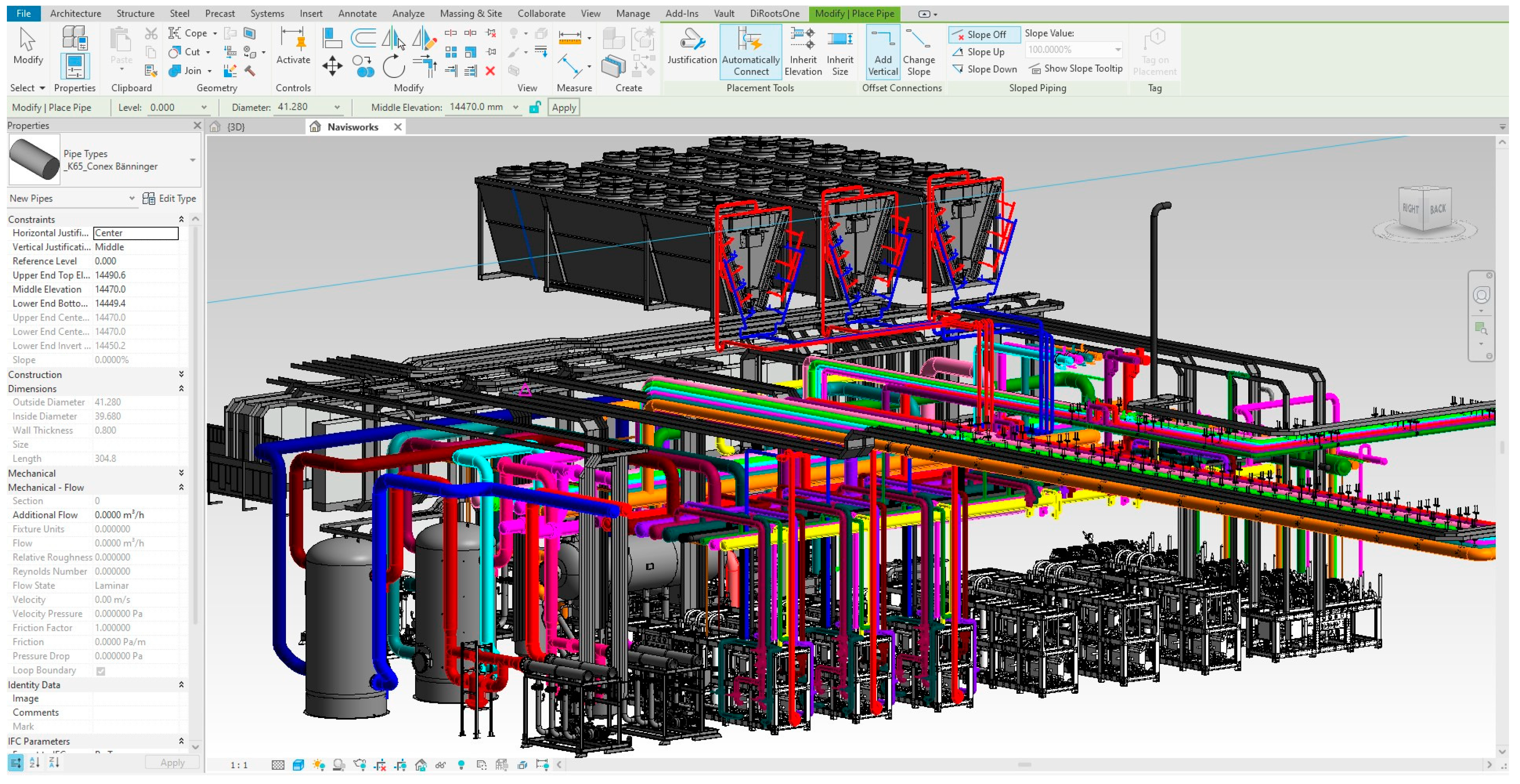
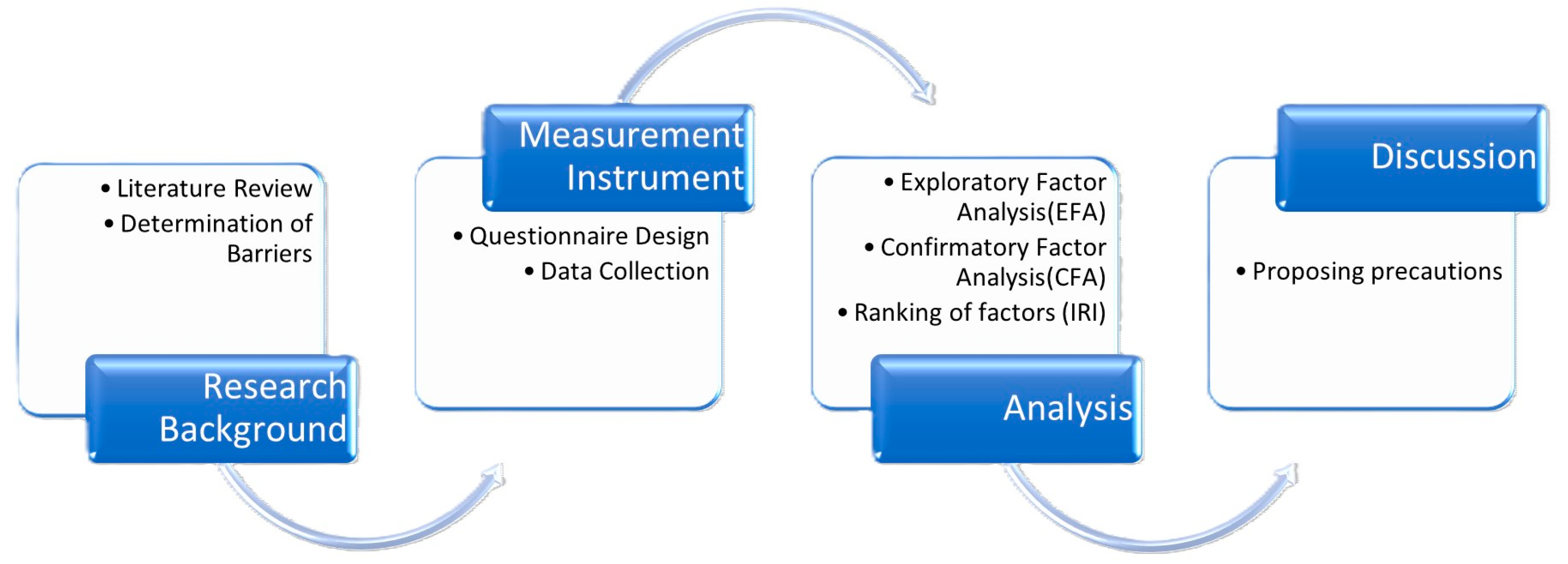

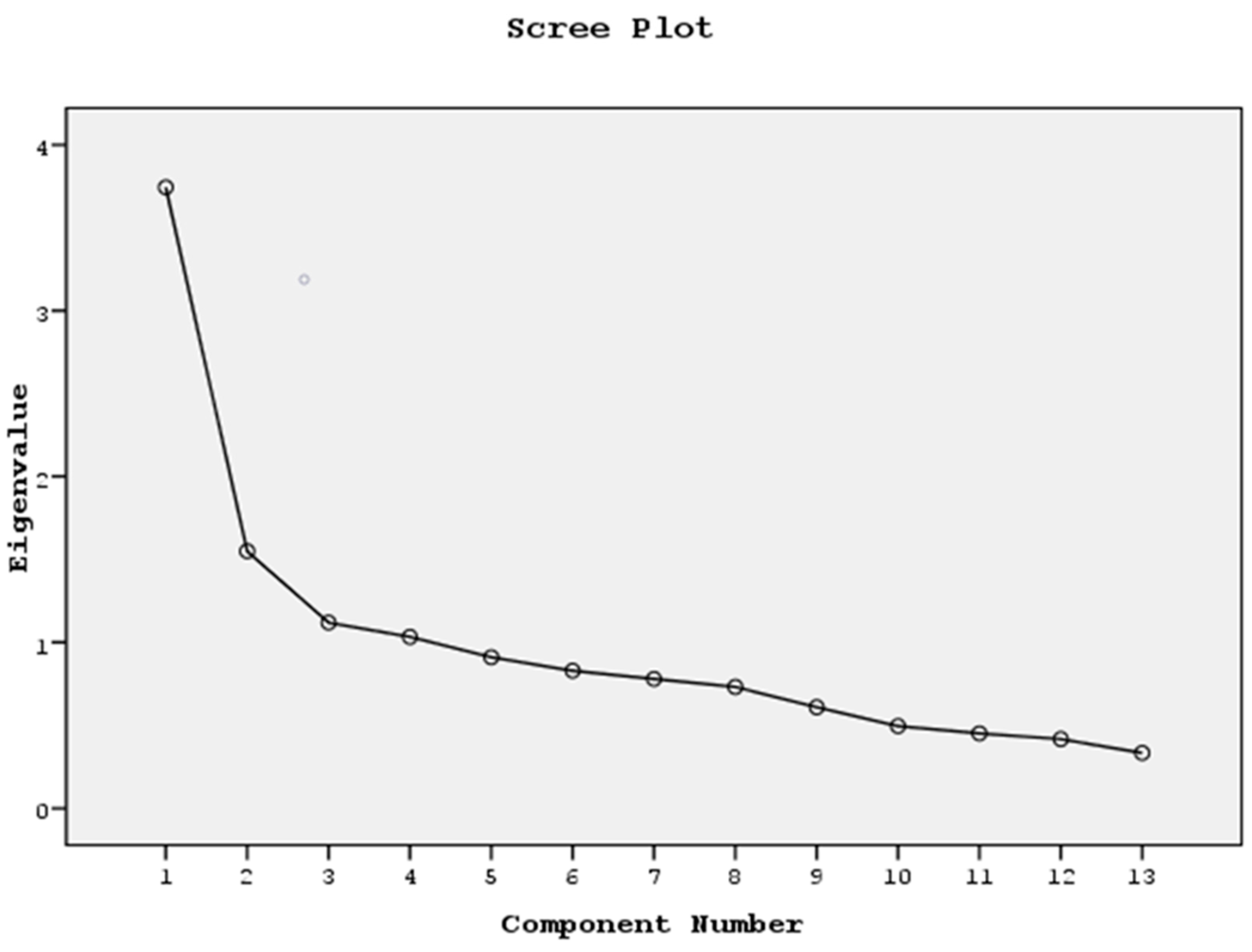
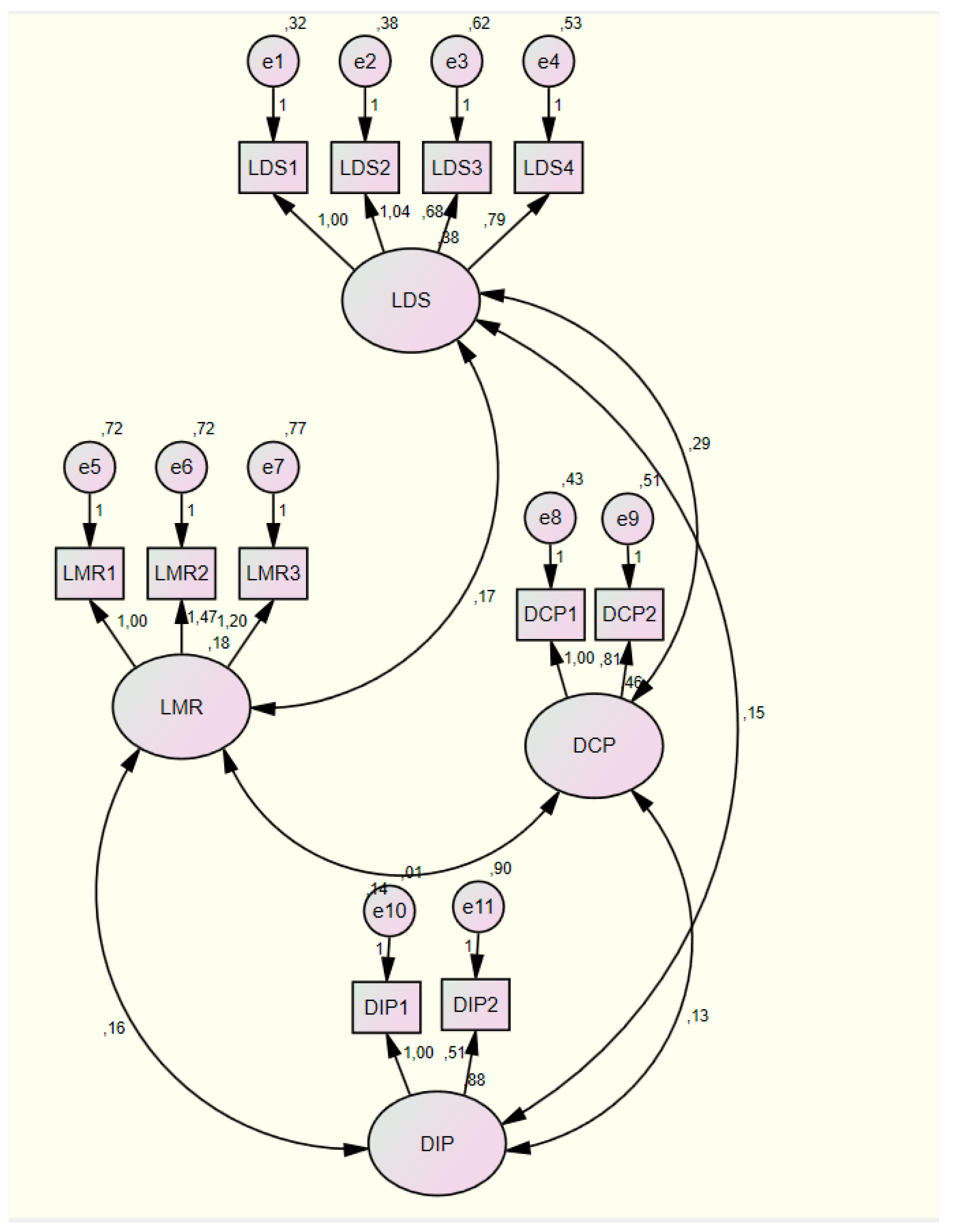
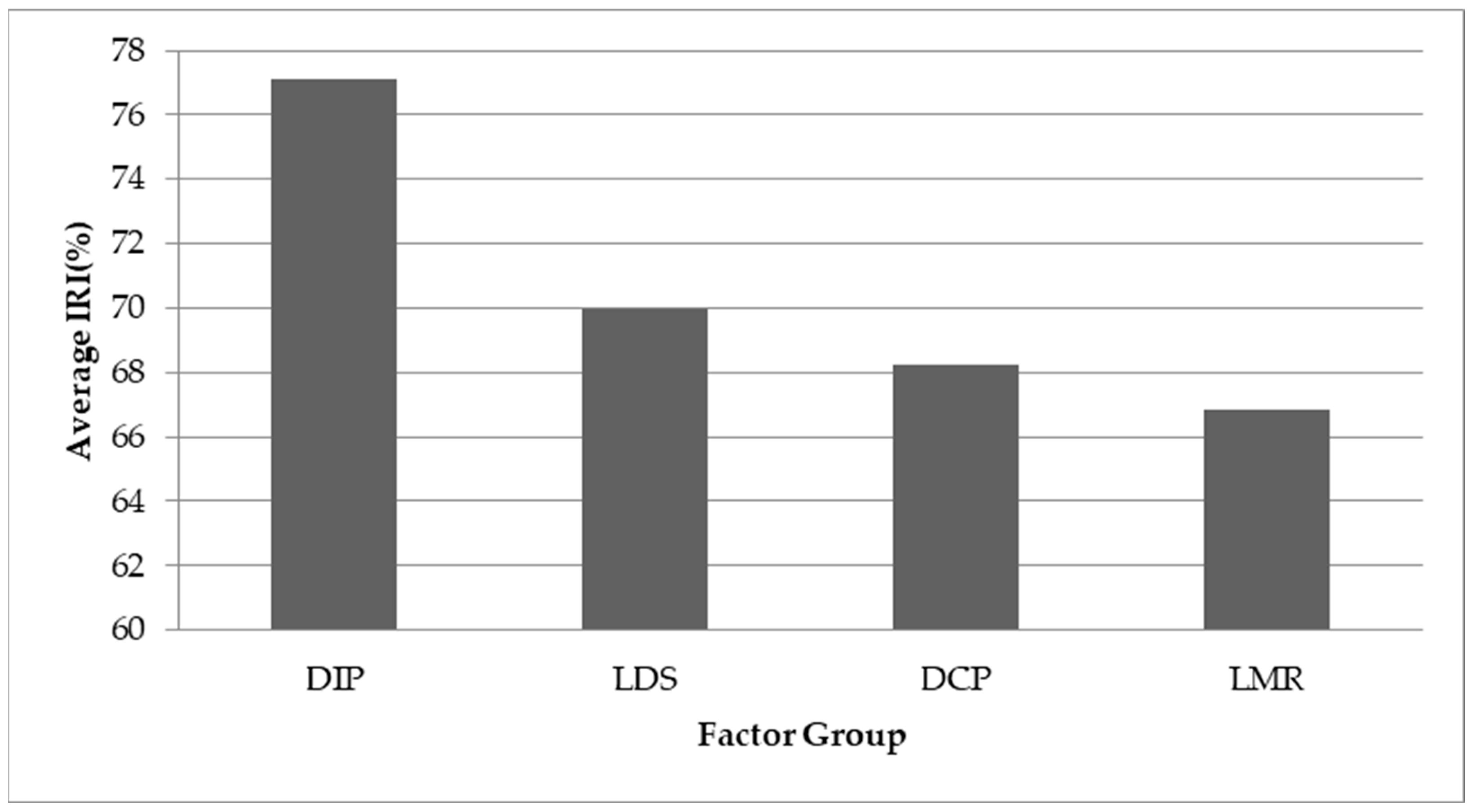
| Barriers | References |
|---|---|
| The heavy workload of project designers | [25,33] |
| Lack of academic information and pilot studies, shortcomings in promotion | [26,34,35,36,51,58,59] |
| Lack of sufficient input data to create a BIM model | [37] |
| Lack of theoretical and practical practice of BIM tools | [52] |
| Lack of secure infrastructure in BIM models | [38,53,54] |
| Deficiencies in regulations, directives, and specifications about BIM | [34,56] |
| Lack of sufficient standards and guidelines about BIM | [57] |
| Insufficient internet infrastructure or open electronic data-sharing platforms | [38,53,55] |
| Lack of motivation on use of BIM by employers, owners, project managers | [26,34,36,39,40,59] |
| Lack of knowledge regarding legal issues attributed to BIM-based projects and contacts | [41,42,43,44,58] |
| Resistance to new generation technologies and changes | [45,46] |
| Lack of qualified staff | [34,47,57] |
| Necessity of extra budgeting for the use of BIM technologies and personnel training | [28,34,59] |
| Lack of information on BIM-based organizational scheme and project management | [40,49] |
| Time constraints | [50] |
| Insufficient cooperation and coordination among stakeholders on BIM use | [35,58] |
| Budget Allocated (%) | Frequency (f) | Percent (%) |
|---|---|---|
| 0–20 | 44 | 27.5 |
| 20–40 | 52 | 32.5 |
| 40–60 | 36 | 22.5 |
| 60–80 | 21 | 13.1 |
| 80–100 | 7 | 4.4 |
| Factor | Items Code | Item Name | Factor Loadings | Eigen Values | % of Variance | Cronbach’s Alpha (Cα) | |
|---|---|---|---|---|---|---|---|
| Factor I | Lack of Documentation and Specifications (LDS) | LDS1 | Lack of academic information and pilot studies, lack of promotion | 0.689 | 3.761 | 28.94 | 0.807 |
| LDS2 | Lack of sufficient input data to create a BIM model | 0.722 | |||||
| LDS3 | Deficiencies in regulations, directives, and specifications about BIM | 0.688 | |||||
| LDS4 | Lack of sufficient standards and guidelines about BIM | 0.641 | |||||
| Factor II | Lack of Motivation and Resistance to BIM (LMR) | LMR1 | Lack of motivation on use of BIM by employers, owners, project managers | 0.635 | 1.551 | 11.93 | 0.773 |
| LMR2 | Resistance to new generation technologies and changes | 0.744 | |||||
| LMR3 | Insufficient cooperation and coordination among stakeholders on BIM use | 0.617 | |||||
| Factor III | Deficiencies in Case Studies and Project Drawings (DCP) | DCP1 | Lack of theoretical and practical practice of BIM tools | 0.777 | 1.145 | 8.81 | 0.785 |
| DCP2 | Lack of information on BIM-based organizational scheme and project management | 0.829 | |||||
| Factor IV | Deficiencies in Infrastructure and Lack of Qualified Personnel (DIP) | DIP1 | Lack of qualified staff | 0.708 | 1.038 | 7.98 | 0.709 |
| DIP2 | Necessity of extra budgeting for the use of BIM technologies and personnel training | 0.797 |
| Fit Indices | Calculated Indices | Recommended Values |
|---|---|---|
| Chi-square/Degree of freedom (CMIN/DF) | 1.121 | <2.50 |
| Root mean square residual (RMR) | 0.053 | <0.10 |
| Goodness of fit index (GFI) | 0.956 | <1.00 |
| Adjusted goodness of fit index (AGFI) | 0.913 | <1.00 |
| Comparative fit index (CFI) | 0.987 | <1.00 |
| Normed fit index (NFI) | 0.897 | <0.95 |
| Relative fit index (RFI) | 0.826 | <0.90 |
| Root mean square error of approximation (RMSEA) | 0.028 | <0.05 |
| Factor | Items Code | Overall IRI(%) | Average IRI(%) | Rank of Factor | |
|---|---|---|---|---|---|
| Factor I | Lack of Documentation and Specifications (LDS) | LDS1 | 68.62 | 69.96 | 2 |
| LDS2 | 70.50 | ||||
| LDS3 | 71.12 | ||||
| LDS4 | 69.62 | ||||
| Factor II | Lack of Motivation and Resistance to BIM (LMR) | LMR1 | 67.50 | 66.83 | 4 |
| LMR2 | 66.75 | ||||
| LMR3 | 66.25 | ||||
| Factor III | Deficiencies in Case Studies and Project Drawings (DCP) | DCP1 | 66.62 | 68.24 | 3 |
| DCP2 | 69.87 | ||||
| Factor IV | Deficiencies in Infrastructure and Lack of Qualified Personnel (DIP) | DIP1 | 77.75 | 77.12 | 1 |
Disclaimer/Publisher’s Note: The statements, opinions and data contained in all publications are solely those of the individual author(s) and contributor(s) and not of MDPI and/or the editor(s). MDPI and/or the editor(s) disclaim responsibility for any injury to people or property resulting from any ideas, methods, instructions or products referred to in the content. |
© 2024 by the authors. Licensee MDPI, Basel, Switzerland. This article is an open access article distributed under the terms and conditions of the Creative Commons Attribution (CC BY) license (https://creativecommons.org/licenses/by/4.0/).
Share and Cite
Yılmaz, İ.C.; Yılmaz, D.; Kandemir, O.; Tekin, H.; Atabay, Ş.; Bulut Karaca, Ü. Barriers to BIM Implementation in the HVAC Industry: An Exploratory Study. Buildings 2024, 14, 788. https://doi.org/10.3390/buildings14030788
Yılmaz İC, Yılmaz D, Kandemir O, Tekin H, Atabay Ş, Bulut Karaca Ü. Barriers to BIM Implementation in the HVAC Industry: An Exploratory Study. Buildings. 2024; 14(3):788. https://doi.org/10.3390/buildings14030788
Chicago/Turabian StyleYılmaz, İsmail Cengiz, Deniz Yılmaz, Onur Kandemir, Hamdi Tekin, Şenay Atabay, and Ülger Bulut Karaca. 2024. "Barriers to BIM Implementation in the HVAC Industry: An Exploratory Study" Buildings 14, no. 3: 788. https://doi.org/10.3390/buildings14030788
APA StyleYılmaz, İ. C., Yılmaz, D., Kandemir, O., Tekin, H., Atabay, Ş., & Bulut Karaca, Ü. (2024). Barriers to BIM Implementation in the HVAC Industry: An Exploratory Study. Buildings, 14(3), 788. https://doi.org/10.3390/buildings14030788







